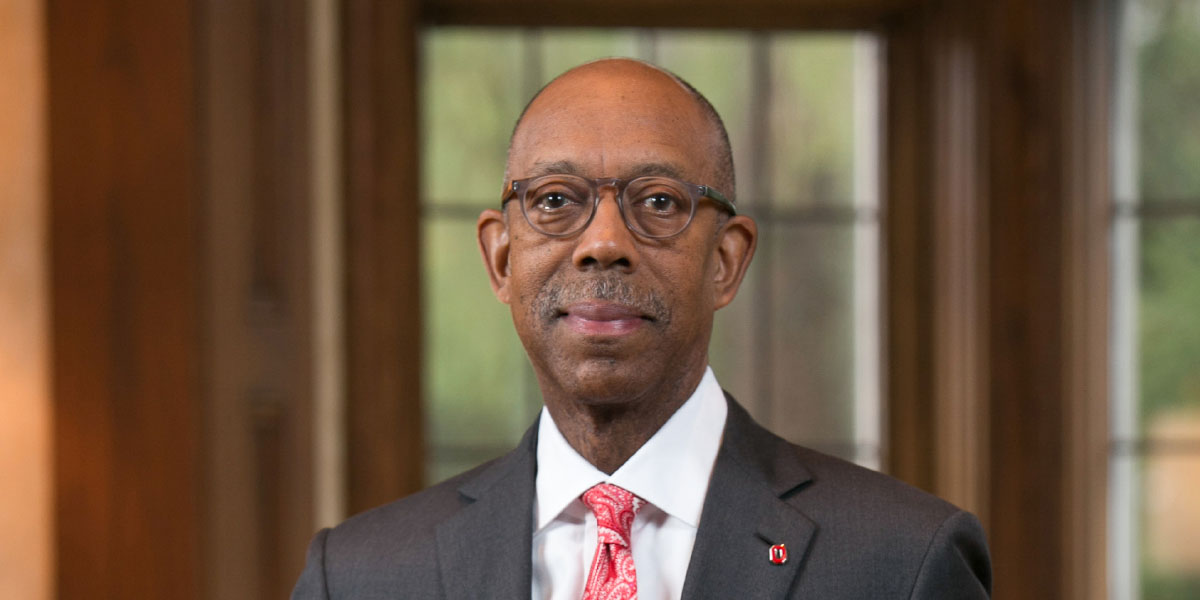Dr. Michael V. Drake’s service in higher education spans nearly four decades and includes senior leadership positions at institutions such as the University of California, Irvine; the University of California System; and the University of California, San Francisco, School of Medicine. He became the 15th president of The Ohio State University in 2014.
Under Drake’s leadership, Ohio State has seen record levels in applications, graduation rates, academic excellence, diversity and donor support, and increases in National Institutes of Health and National Science Foundation research funding. The university has been honored with national recognition for its commitment to teaching and learning as well as excellence in patient safety and clinical outcomes at the university’s Wexner Medical Center.
The launch of Time and Change, the university’s strategic plan, in August 2017, aims to further strengthen Ohio State’s position as a national flagship public research university. Among several areas of broad focus, the institution’s commitment to teaching and learning has led to a collaboration with Apple Inc. to create a comprehensive digital learning initiative: Digital Flagship. It supports educational innovation and career readiness for students and economic development opportunities for the community.
Drake notes: "We are establishing Digital Flagship by combining the resources and talents of an international technology leader and one of the most comprehensive public universities in the world."
Drake answers the following questions to elaborate on the details of the undertaking.
What collaborative work between Ohio State and Apple brought about the idea of establishing a digital learning initiative of this magnitude?
We have been working with Apple on a variety of digital-learning efforts for many years. Digital Flagship represented an unprecedented opportunity to expand our collaboration with one of the most innovative companies in the world to elevate the quality of our teaching and learning. It also gave us the chance to provide access to technology for all our incoming students, study those outcomes, and see how effective we can be.
In the freshman seminar that I co-teach, we have delivered all course material on iPads and implemented technology to enhance our teaching. We are thrilled to expand this pilot program to include the university’s entire entering class in autumn 2018. Our students, faculty, and broader community will have outstanding opportunities to develop modern digital skills to enhance learning and excel in the workplace.
Why was Apple—and its CEO Tim Cook—interested in pursuing this collaboration with Ohio State?
This collaboration is a natural evolution and expansion of our working relationship. I think Apple was intrigued about working with an institution of our size and moving more into the higher education realm. And as a flagship research institution, we want to stay on the front line of technology in the classroom.
Incorporating Apple’s new coding curriculum seems to be a bold and smart move to prepare students in the skills of a growing field. What workforce data might have prompted this decision—and what broad goals do you have for the program with regard to access to job training and certification?
The evidence shows that there is a growing demand for computer science–related jobs and skills in the global workforce. What is really exciting about Digital Flagship is that it provides opportunities for all students to learn coding and computing skills, not only those students with a focus on computer science. Many incredible app-economy success stories have come from the interaction of the liberal arts and technology. By providing students with basic coding skills and an understanding of how technology and apps work, we are laying the foundation for our students to imagine and create solutions in their future careers. These skills will help them find new ways to solve problems, explore new ideas, and inspire creativity within our ever-changing world.
How involved will faculty be in the development of the digital learning initiative?
Our faculty are integral to all teaching and learning initiatives, because they are in classrooms across our campuses engaging with our students. Already, they are participating in pilot courses and training to help them integrate technology into their teaching. An iOS design laboratory on the Columbus campus will support faculty—as well as staff, students, and others—in the development of new apps and new tools in the Swift coding language.
Our overall goal is to assist our instructors in creating engaging, active, and adaptive courses to help our students succeed in the classroom and beyond.
Why do you think that Ohio State has become fertile ground for such innovative work?
As one of the nation’s largest land-grant institutions, Ohio State has a track record of utilizing our breadth and scale across disciplines to implement big ideas. As we move to a more global, connected world and workforce, we are committed to creating the most effective and modern environment for teaching, learning, and discovery.
Carole Schweitzer is editor in chief of Business Officer.



